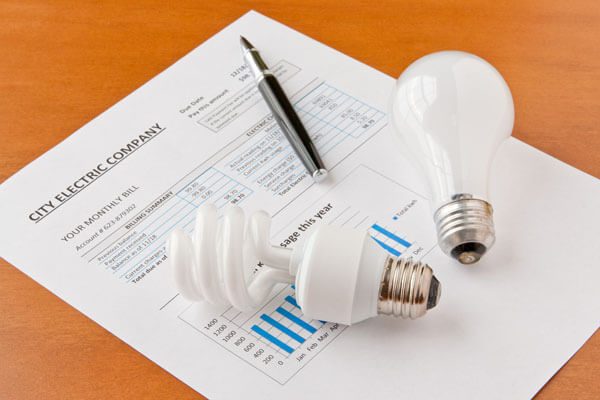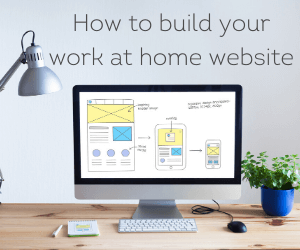I don’t know about you, but energy costs are our 4th biggest monthly household expense (behind the mortgage, groceries and daycare for those of you playing at home). Now, there are many ways you can save, but by far the best is making sure you are getting the best deal. But with so many factors that come into play what are the things to look for when comparing energy companies?
Contracts, rates, supply, usage and discounts. Honestly, it’s enough to give you a headache, which is why so many people just give up and stay with their current provider even though their bills are going up.
There are many factors which determine the best energy plan for your household. With this in mind, here are 7 things to look for when comparing energy companies.
Things to look for when comparing energy companies
Charges
If you look at your energy bill (usually the second page) you will find a couple of different charges. One is for your supply and the other is your usage. Supply charges is an amount charged per day for the supply of your electricity or gas. This amount gets charged no matter how much energy you use and is a locked in daily rate.

The usage charge is the amount of electricity or gas you have actually used for the billing period. This obviously changes depending on how much or little energy you have used. Usage charges are priced as cents per kilowatt/hour.
Generally, if you are not using much energy (maybe only one or two people in the house) than it may be better to look for a good supply rate as your usage is not much. If you are a family that uses more energy (because the more people in the house the more usage), than a cheaper usage rate may be more beneficial than the supply rate. The best way to test is to get an energy quote from a few suppliers using the usage from your last few bills and compare.
Time of day tariffs
Some companies give you the option of selecting from a single rate or time of use tariff. A single rate tariff means you are paying one price per kilowatt/hour no matter what time of day you are using the energy. A time of use tariff charges different rates depending on when you are using your energy, and you will need a smart meter to choose this option. Generally divided into peak (late afternoon and evening), off-peak (overnight) and shoulder (during the day), but this will vary depending on your state and energy company.
It is very important to know when you are using most of your electricity before deciding to choose a time of day tariff. If you use the most power heavy appliances (washing machine, dishwasher, dryer, air conditioner etc) in the late afternoon and evening and can’t or don’t want to change your habits, then a time of day tariff will be very costly.
Discounts
Energy companies are big on advertising discounts, but it can sometimes be tricky to work out how energy discounts work, as there are a few different ways companies will offer discounts with their plans.
- Usage discount – This is a discount that’s applied to your usage charges
- Supply discount – This is a discount that’s based on the supply charges on your account.
- Pay on time discount – This is a discount that’s provided so long as you pay your bill on time
It’s worth checking out whether the pay on time discount applies for usage, supply or your entire, bill as this will have a big impact on how much you’re able to save. Most energy companies use a pay on time discount system so, you’ll also need to pay the bill by the due date to get the discount.
As an example, energy provider amaysim provide a pay on time discount that applies to BOTH usage and supply charges, which means you get a healthy discount, as long as you pay your bill on time.
Solar
Solar is a great way too reduce the cost of your bills, as well as being a renewable energy source.

If you have solar panels on your roof, you can feed energy back into the grid when you’re not using energy yourself and get paid for your effort (this is referred to as a feed-in-tariff).
It pays to check the tariff rate you’ll receive, as this can vary from company to company.
Generally, feed-in-tariff are less than half of the price you pay for electricity, so you need to be sending over double your usage back into the grid to not receive a payable bill, but every little bit helps!
The best way to save with solar is to use appliances during the day when you are generating power from your panels. Use things such as washing machines and dishwashers during the day instead of at night, when you are paying for it. Being a work at home mum, I find it generally easier to get the most out of solar during the day, but you would need to weigh up the benefits if everyone is out of the house during the daytime.
And if renewable energy is important, you can always ask the company where they’re getting their energy from and what percentage is from renewables.
Bill timing
Most of the time energy companies bill you every three months by default. This can lead to big bills, especially during winter and summer. Some companies let you choose whether you want to be billed monthly. This will generally lead to an estimation of the bill on the months that someone hasn’t come to read your meter, as the reading will still be done quarterly.
What this means is that your bill may not be 100% accurate on the estimated bills, but will be adjusted when the meter gets read. A lot of companies now will let you get around that by entering your own meter read into your online account, but you’ll need to remember to do it, and learn how to read it properly.
Terms and Conditions
Check the fine print and know what you’re signing up for. Do you need to be in a contract to get a discount or certain rate? Is that rate for a time period or is it ongoing for as long as you’re with the company? Do you have to pay a certain way (e.g. by direct debit) to get a discount? Basically, actually read the contract, t’s and c’s or disclosure statements (those things no one ever reads) to find out what you’re up for.
Fees
Make sure you are checking what fees are involved before you switch. Late payment fees, early termination fees (if you signed on for a period of time), and fees for moving during a contracted period are the most common.
So, there’s some things to look out for. One last point to make is that none of this applies if you are from Western Australia regarding electricity as regulation is completely different to all other states, but you can choose your gas company.
If you’re one of those people that’s thought about maybe, possibly, switching one day when you can be bothered but it all seems to hard, then hopefully we’ve explained some of the confusion. Unfortunately, the only way to know if your getting a good deal is by getting an energy quote and seeing if you can do better.
And if you need a bit of extra cash to get you through a big bill, you can make a bit of extra money from home.






